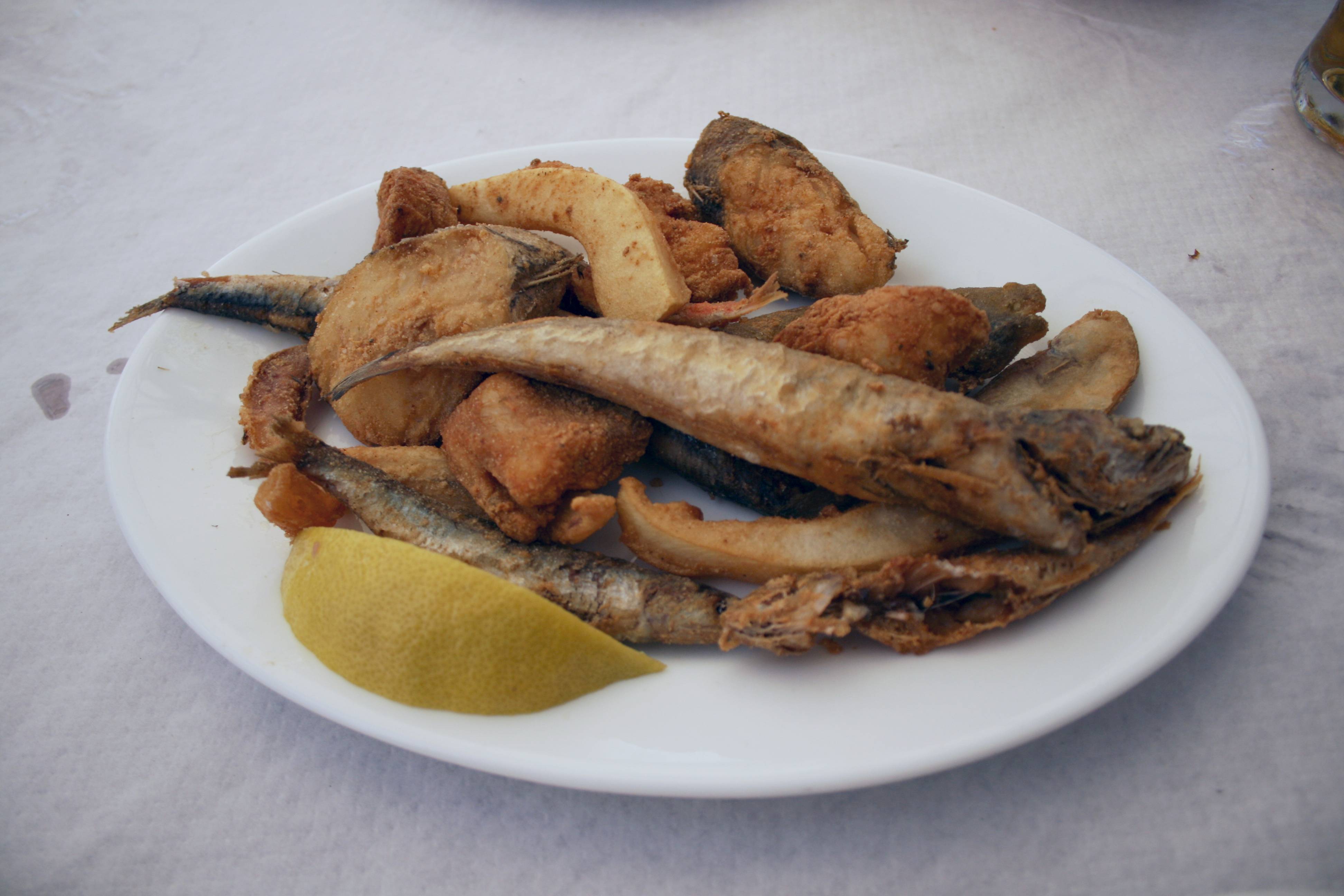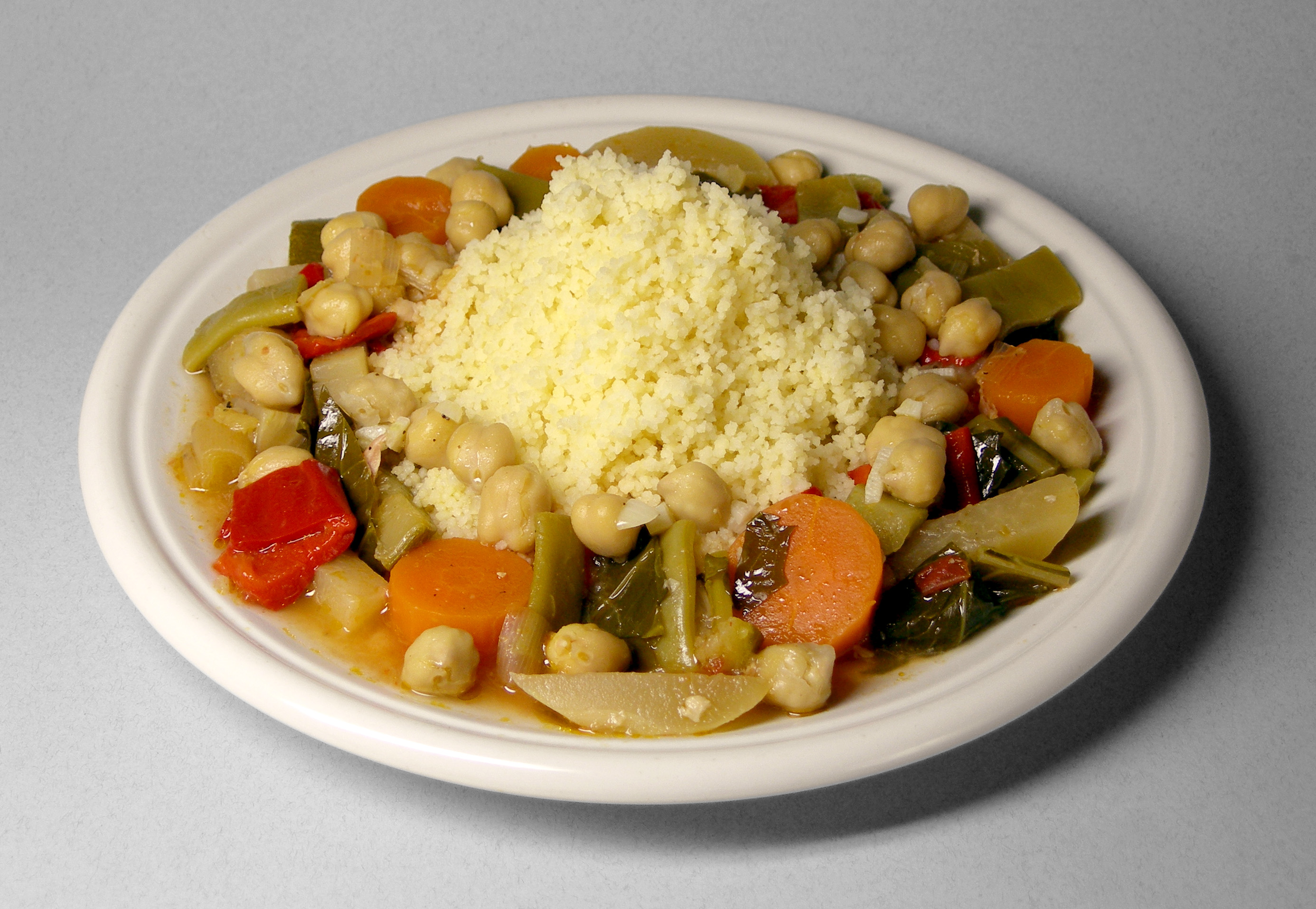|
Fazuelos
Fazuelos, fijuelas, hiuelas, deblas, or orecchie di Ammon ( he, פזואלוס / פיג'ואלס / דבלאס) are Sephardic Jewish pastries of thin fried dough. In Sephardic tradition, they are eaten at Purim; the Italian name recalls the shape of Haman's ears, similarly to the Hebrew name for hamantashen, ''oznei Haman''.Claudia Roden, (2006), ''The Book of Jewish Food: An Odyssey from Samarkand and Vilna to the Present Day'', Penguin Books, p. 592 Fazuelo are made by frying a thin dough of flour and eggs. Turkish Jews add brandy to the dough and Moroccan Jews eat them with cinnamon and syrup. They are similar to Andalusian Pestiños, but the latter are eaten with honey. See also * Sephardi Jewish cuisine Sephardic Jewish cuisine is an assortment of cooking traditions that developed among the Sephardi Jews. Those of this Iberian origin who were dispersed in the Sephardic Diaspora ultimately became the Eastern Sephardim and North African Sep ... References ... [...More Info...] [...Related Items...] OR: [Wikipedia] [Google] [Baidu] |
Sephardic Cuisine
Sephardic Jewish cuisine is an assortment of cooking traditions that developed among the Sephardi Jews. Those of this Iberian origin who were dispersed in the Sephardic Diaspora ultimately became the Eastern Sephardim and North African Sephardim as they settled throughout the Mediterranean in Turkey, Greece, the Balkans, and the Arab countries of West Asia and North Africa. Cuisine of the Sephardi Jews also includes the cuisine of those who became the Western Sephardim who settled in Holland, England, and from these places elsewhere. Mizrahi Jews, being the pre-existing Jews of the Greater Middle East (of non-Spanish and non-Portuguese origin), are sometimes called Sephardim in a broader sense due to their style of liturgy. Although there is some overlap in populations due to the Sephardic Diaspora, Sephardic Jews also settled in many other countries outside the Greater Middle East as well. As such, this article deals only with the cuisine of the Jewish populations with ... [...More Info...] [...Related Items...] OR: [Wikipedia] [Google] [Baidu] |
Jewish Cuisine
Jewish cuisine refers to the worldwide cooking traditions of the Jewish people. During its evolution over the course of many centuries, it has been shaped by Jewish dietary laws (''kashrut''), Jewish festivals and holidays, and traditions centred around Shabbat. Jewish cuisine is influenced by the economics, agriculture, and culinary traditions of the many countries where Jewish communities have settled and varies widely throughout the entire world. The history of Jewish cuisine begins with the cuisine of the ancient Israelites. As the Jewish diaspora grew, different styles of Jewish cooking developed. The distinctive styles in Jewish cuisine vary by each community across the Ashkenazi, Sephardi, and Mizrahi diaspora groupings; there are also notable dishes within the culinary traditions of the stand-alone significant Jewish diaspora communities from Greece, Iran, and Yemen. Since the establishment of the State of Israel in 1948, and particularly since the late 1970s, a na ... [...More Info...] [...Related Items...] OR: [Wikipedia] [Google] [Baidu] |
Sephardi Jewish Cuisine
Sephardic Jewish cuisine is an assortment of cooking traditions that developed among the Sephardi Jews. Those of this Iberian origin who were dispersed in the Sephardic Diaspora ultimately became the Eastern Sephardim and North African Sephardim as they settled throughout the Mediterranean in Turkey, Greece, the Balkans, and the Arab countries of West Asia and North Africa. Cuisine of the Sephardi Jews also includes the cuisine of those who became the Western Sephardim who settled in Holland, England, and from these places elsewhere. Mizrahi Jews, being the pre-existing Jews of the Greater Middle East (of non-Spanish and non-Portuguese origin), are sometimes called Sephardim in a broader sense due to their style of liturgy. Although there is some overlap in populations due to the Sephardic Diaspora, Sephardic Jews also settled in many other countries outside the Greater Middle East as well. As such, this article deals only with the cuisine of the Jewish populations with ... [...More Info...] [...Related Items...] OR: [Wikipedia] [Google] [Baidu] |
Pastry
Pastry is baked food made with a dough of flour, water and shortening (solid fats, including butter or lard) that may be savoury or sweetened. Sweetened pastries are often described as '' bakers' confectionery''. The word "pastries" suggests many kinds of baked products made from ingredients such as flour, sugar, milk, butter, shortening, baking powder, and eggs. Small tarts and other sweet baked products are called pastries as a synecdoche. Common pastry dishes include pies, tarts, quiches, croissants, and pasties. The French word pâtisserie is also used in English (with or without the accent) for the same foods. Originally, the French word referred to anything, such as a meat pie, made in dough (''paste'', later ''pâte'') and not typically a luxurious or sweet product. This meaning still persisted in the nineteenth century, though by then the term more often referred to the sweet and often ornate confections implied today. Pastry can also refer to the pastry d ... [...More Info...] [...Related Items...] OR: [Wikipedia] [Google] [Baidu] |
Flour
Flour is a powder made by grinding raw grains, roots, beans, nuts, or seeds. Flours are used to make many different foods. Cereal flour, particularly wheat flour, is the main ingredient of bread, which is a staple food for many cultures. Corn flour has been important in Mesoamerican cuisine since ancient times and remains a staple in the Americas. Rye flour is a constituent of bread in central and northern Europe. Cereal flour consists either of the endosperm, germ, and bran together (whole-grain flour) or of the endosperm alone (refined flour). ''Meal'' is either differentiable from flour as having slightly coarser particle size (degree of comminution) or is synonymous with flour; the word is used both ways. For example, the word '' cornmeal'' often connotes a grittier texture whereas corn flour connotes fine powder, although there is no codified dividing line. The CDC has cautioned not to eat raw flour doughs or batters. Raw flour can contain bacteria like '' ... [...More Info...] [...Related Items...] OR: [Wikipedia] [Google] [Baidu] |
Egg (food)
Humans and human ancestors have scavenged and eaten animal eggs for millions of years. Humans in Southeast Asia had domesticated chickens and harvested their eggs for food by 1,500 BCE. The most widely consumed eggs are those of fowl, especially chickens. Eggs of other birds, including ostriches and other ratites, are eaten regularly but much less commonly than those of chickens. People may also eat the eggs of reptiles, amphibians, and fish. Fish eggs consumed as food are known as roe or caviar. Bird and reptile eggs consist of a protective eggshell, albumen ( egg white), and vitellus ( egg yolk), contained within various thin membranes. Egg yolks and whole eggs store significant amounts of protein and choline, and are widely used in cookery. Due to their protein content, the United States Department of Agriculture formerly categorized eggs as ''Meats'' within the Food Guide Pyramid (now MyPlate). Despite the nutritional value of eggs, there are some potential healt ... [...More Info...] [...Related Items...] OR: [Wikipedia] [Google] [Baidu] |
Dough
Dough is a thick, malleable, sometimes elastic paste made from grains or from leguminous or chestnut crops. Dough is typically made by mixing flour with a small amount of water or other liquid and sometimes includes yeast or other leavening agents, as well as ingredients such as fats or flavorings. Making and shaping dough begins the preparation of a wide variety of foodstuffs, particularly breads and bread-based items, but also including biscuits, cakes, cookies, dumplings, flatbreads, noodles, pasta, pastry, pizza, piecrusts, and similar items. Dough can be made from a wide variety of flour, commonly wheat and rye but also maize, rice, legumes, almonds, and other cereals or crops. Types of dough Doughs vary widely depending on ingredients, the desired end product, the leavening agent (particularly whether the dough is based on yeast or not), how the dough is mixed (whether quickly mixed or kneaded and left to rise), and cooking or baking technique. The ... [...More Info...] [...Related Items...] OR: [Wikipedia] [Google] [Baidu] |
Sephardi Jews
Sephardic (or Sephardi) Jews (, ; lad, Djudíos Sefardíes), also ''Sepharadim'' , Modern Hebrew: ''Sfaradim'', Tiberian: Səp̄āraddîm, also , ''Ye'hude Sepharad'', lit. "The Jews of Spain", es, Judíos sefardíes (or ), pt, Judeus sefarditas or Hispanic Jews, are a Jewish diaspora population associated with the Iberian Peninsula. The term, which is derived from the Hebrew ''Sepharad'' (), can also refer to the Mizrahi Jews of Western Asia and North Africa, who were also influenced by Sephardic law and customs. Many Iberian Jewish exiles also later sought refuge in Mizrahi Jewish communities, resulting in integration with those communities. The Jewish communities of the Iberian Peninsula prospered for centuries under the Muslim reign of Al-Andalus following the Umayyad conquest of Hispania, but their fortunes began to decline with the Christian ''Reconquista'' campaign to retake Spain. In 1492, the Alhambra Decree by the Catholic Monarchs of Spain called for the exp ... [...More Info...] [...Related Items...] OR: [Wikipedia] [Google] [Baidu] |
Purim
Purim (; , ; see Name below) is a Jewish holiday which commemorates the saving of the Jewish people from Haman, an official of the Achaemenid Empire who was planning to have all of Persia's Jewish subjects killed, as recounted in the Book of Esther (usually dated to the 5th century BCE). Haman was the royal vizier to Persian king Ahasuerus ( Xerxes I or Artaxerxes I; "Khshayarsha" and "Artakhsher" in Old Persian, respectively). His plans were foiled by Mordecai of the tribe of Benjamin, and Esther, Mordecai's cousin and adopted daughter who had become queen of Persia after her marriage to Ahasuerus. The day of deliverance became a day of feasting and rejoicing among the Jews. According to the Scroll of Esther, "they should make them days of feasting and gladness, and of sending portions one to another, and gifts to the poor". Purim is celebrated among Jews by: *Exchanging gifts of food and drink, known as *Donating charity to the poor, known as *Eating a celebrato ... [...More Info...] [...Related Items...] OR: [Wikipedia] [Google] [Baidu] |
Haman
Haman ( ; also known as Haman the Agagite or Haman the evil) is the main antagonist in the Book of Esther, who according to the Hebrew Bible was an official in the court of the Persian empire under King Ahasuerus, commonly identified as Xerxes I (died 465 BCE) but traditionally equated with Artaxerxes I or Artaxerxes II. As his epithet ''Agagite'' indicates, Haman was a descendant of Agag, the king of the Amalekites. Some commentators interpret this descent to be symbolic, due to his similar personality. Retrieved 13 February 2017 Etymology and meaning of the name The name has been equated with the Persian name ''Omanes''Encyclopaedia Judaica CD-ROM Edition 1.0 1997, ''Haman'' ( peo, 𐎡𐎶𐎴𐎡𐏁, ) recorded by Greek historians. Several etymologies have been proposed for it: it has been associated with the Persian word , meaning "illustrious" (naming dictionaries typically list it as meaning "magnificent"); with the sacred drink Haoma; or with the Persian name Vohuman, me ... [...More Info...] [...Related Items...] OR: [Wikipedia] [Google] [Baidu] |
Hamantashen
A hamantash (pl. ''hamantashen''; also spelled ''hamantasch'', ''hamantaschen''; yi, המן־טאַש ''homentash'', pl. ''homentashn'', 'Haman pockets') is an Ashkenazi Jewish triangular filled-pocket pastry, associated with the Jewish holiday of Purim. The name refers to Haman, the villain in the Purim story. In Hebrew, hamantashen are also known as (''oznei Haman'') meaning "Haman's ears". "Haman's ears" also refers to a Sephardic Purim pastry, "Orejas de Haman", thought to originate in Spain and Italy, that is made by frying twisted or rolled strips of dough. Traditionally, the dough for hamantashen was made with yeast. With the invention of baking powder during the 1840s and its wide adoption during the first half of the twentieth century, baking powder supplanted yeast, and hamantashen dough became a cookie rather than pastry dough. To shape, a filling is placed in the center of a circle of dough, which is either folded in half and shaped into a triangle or the sides are ... [...More Info...] [...Related Items...] OR: [Wikipedia] [Google] [Baidu] |
Flour
Flour is a powder made by grinding raw grains, roots, beans, nuts, or seeds. Flours are used to make many different foods. Cereal flour, particularly wheat flour, is the main ingredient of bread, which is a staple food for many cultures. Corn flour has been important in Mesoamerican cuisine since ancient times and remains a staple in the Americas. Rye flour is a constituent of bread in central and northern Europe. Cereal flour consists either of the endosperm, germ, and bran together (whole-grain flour) or of the endosperm alone (refined flour). ''Meal'' is either differentiable from flour as having slightly coarser particle size (degree of comminution) or is synonymous with flour; the word is used both ways. For example, the word '' cornmeal'' often connotes a grittier texture whereas corn flour connotes fine powder, although there is no codified dividing line. The CDC has cautioned not to eat raw flour doughs or batters. Raw flour can contain bacteria like '' ... [...More Info...] [...Related Items...] OR: [Wikipedia] [Google] [Baidu] |









